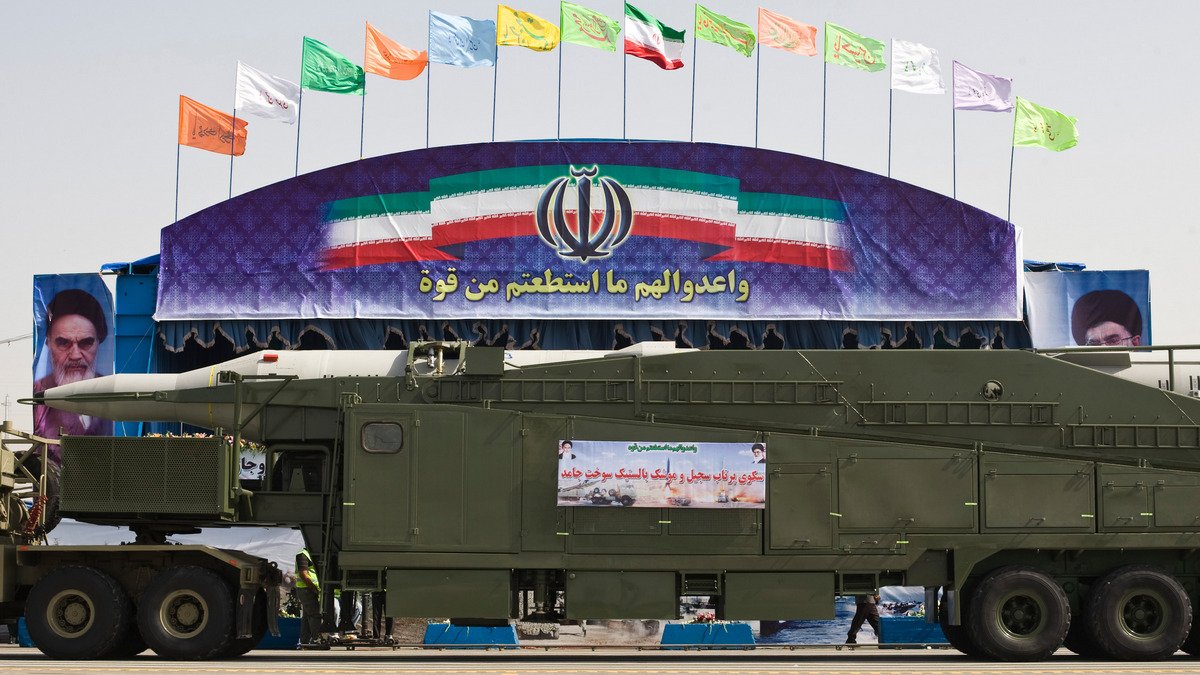Iran on Thursday fired a Sejjil missile at Israel.
This marks the first time Iran’s Islamic Revolutionary Guard Corps (IRGC) has launched this medium-range ballistic missile (MRBM) in an attack on Israel.
“The twelfth wave of Operation ‘True Promise 3’ has begun with the launch of ultra-heavy, long-range, two-stage Sejjil missiles," the IRGC said in a statement.
“Sejjil missiles, powered by solid fuel and with long-range capabilities, are among Iran’s most accurate and powerful strategic weapons. They possess the ability to penetrate and destroy critical enemy targets.”
Iran launched ‘Operation True Promise 3’ to counter Israel’s ‘Operation Rising Lion’.
But what do we know about the Sejjil missile?
Let’s take a closer look:
What do we know?
The Sejjil is an indigenously-designed and developed two-stage, solid-propellant ballistic missile.
It is also known as the Sajjil, Ashoura, and Ashura missile.
Read Israel Iran conflict live updates here.
Work on designing the Sejjil missile began in the early 1990s.
It built off the previous work on the Zelzal short-range ballistic missile (SRBM) – with assistance from China.
The Sejjil missile is around 18 meters long and 1.25 metres wide
It weighs 23,600 kilos and carried a 700 kilo warhead.
It can carry both normal explosives and nuclear warheads.
It has a range of around 2,000 kilometers – which puts the entirety of West Asia in its range.
Though its technical specifications are similar to Iran’s Shahab 3 variants, those missiles were liquid-fuelled.
The Sejjil missile can be launched much quicker than the Shahab 3, which needs to be fuelled before being launched.
The solid fuel also allows the muscle to be easily transported by road.
However, these missiles can be more difficult to navigate.
The missile was first tested in 2008 and then again in 2009.
Iran has tested the missile at least four times since then – the last one being in 2012 when the missile went into the Indian Ocean.
Iran then inducted the missile into service.
The missile is said to have multiple variants.
A Sejjil 3.0 missile is said to be in the works.
It is said to have a range of 4000 kilometers, weigh around 38,000 kilos and be a three-stage missile.
Iran in 2021 claimed it had added ‘enhanced inertial navigation and jet vane control’ to the missile to make it more accurate.
Could it be a turning point in the war?
It depends on whether the Sejjil managed to penetrate Israel’s air defences – which remains unconfirmed.
The IRGC’s claim comes on a day when Iran hit a number of targets in Israel including the Soroka Medical Center in Beersheba city, the Tel Aviv Stock Exchange and residential buildings.
However, Israel claims it has intercepted this missile, whose fragments caused only minor damage to a vehicle.
Israel, meanwhile, struck a heavy water reactor linked to Iran’s nuclear program.
Israeli Defence Minister Israel Katz blamed Iranian Supreme Leader Ayatollah Ali Khamenei and said the military “has been instructed and knows that in order to achieve all of its goals, this man absolutely should not continue to exist.”
US officials said earlier this week that President Donald Trump had vetoed an Israeli plan to kill Khamenei.
Trump later said there were no plans to kill him, “at least not for now.”
With inputs from agencies
)